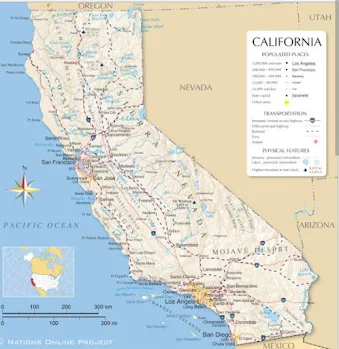California History and Culture: From the Gold Rush to the Magnificence of the Golden State
Overview
California is a tale, not just a state. A site where the world's tech engines are powered by invention, where ancient lands meet modern dreams, and where riches once attracted thousands of aspirants. From its early indigenous civilisations to its ascent to become the most populous and powerful state in the union, California's history is explored in this blog.
First Steps: Native California
More than 100 Native American groups, including the Chumash, Miwok, and Pomo, lived in California long before European explorers did. These groups created sophisticated cultures, vibrant languages, and environmentally conscious ways of life that were closely tied to the earth.
Important Information:
The greatest number of indigenous languages in North America was found in California. From deserts and woodlands to coastal regions, tribes coexisted peacefully with a variety of habitats. Traditions, geographical names, and cultural resurgences all bear witness to their heritage.
The colonisation of Spain (1769–1821)
Beginning with Mission San Diego de Alcalá in 1769, Spanish soldiers and missionaries established missions along the coast. In an effort to control land and convert Native Americans, 21 missions were constructed along El Camino Real over time.
Effect:
Forced labour and sickness caused a sharp decline in Native populations. Catholicism and Spanish architecture left enduring cultural imprints. Mission lands became the sites of towns including San Diego, Los Angeles, and San Francisco.
California in Mexico (1821–1848)
California was ruled by Mexico upon its 1821 independence from Spain. Large ranchos were made possible by land grants, and a unique California culture that was centred on family estates, cattle ranching, and Spanish-Mexican customs developed.
Important Occurrences:
Missions becoming more secular Growing numbers of Mexican-American households American settlers' mounting pressure
The Period of the Gold Rush (1848–1855)
Following the discovery of gold at Sutter's Mill in 1848, everything changed. As word got out, more than 300,000 individuals flocked to California in 1849 in the hopes of becoming wealthy. California earned the moniker "Golden State" during this time.
Principal Impacts:
Quick population expansion Overnight, boomtowns like San Francisco grew. Native tribes' misery and displacement In 1850, California became the 31st state to join the Union.
Growth and Statehood (1850–1900)
Statehood brought about a great deal of change. Modern California was shaped in part by immigration, agriculture, and railroads. Although they were excluded and subjected to discrimination, Chinese immigrants were instrumental in the construction of the Transcontinental Railroad.
Significant events:
1869: The railway was finished. Cities like Sacramento and San Jose are growing. Growth of Central Valley farms and vineyards
Hollywood, Innovation, and War in the 20th Century
Entertainment & Hollywood California,
particularly Los Angeles, emerged as the world's filming capital by the 1920s. A media empire was fuelled by stars, studios, and sunshine.
Second World War
Throughout the war, California's manufacturers, shipyards, and aerospace sector were essential. Additionally, it developed into a popular location for war workers and military people.
The Silicon Valley
Companies like Apple, Intel, and Google emerged in the San Francisco Bay Area, which became the epicentre of the IT revolution in the late 20th century.
Diversity & Social Movements
From the Free Speech Movement at UC Berkeley in the 1960s to the forerunners of environmental activism, LGBTQ+ rights, and immigrant inclusion, California has long been a cultural and political powerhouse.
With inhabitants from Latin America, Asia, the Pacific Islands, and other regions, it also has one of the most diversified populations in the world.
California today
With a population of nearly 39 million, California is the fifth largest economy in the world and a major worldwide economic force.
It enters: Technology (Valley of Silicon) Central Valley agriculture Hollywood entertainment Education (UC system) Sustainability and climate action
Interesting Californian Facts
Eureka is the state motto! —Greek for "I have found it," alluding to the rush for gold.
North America's hottest spot is Death Valley.
It features sunny beaches and snow-capped mountains, sometimes all in one day!
More than 90% of wine produced in the US comes from California.

